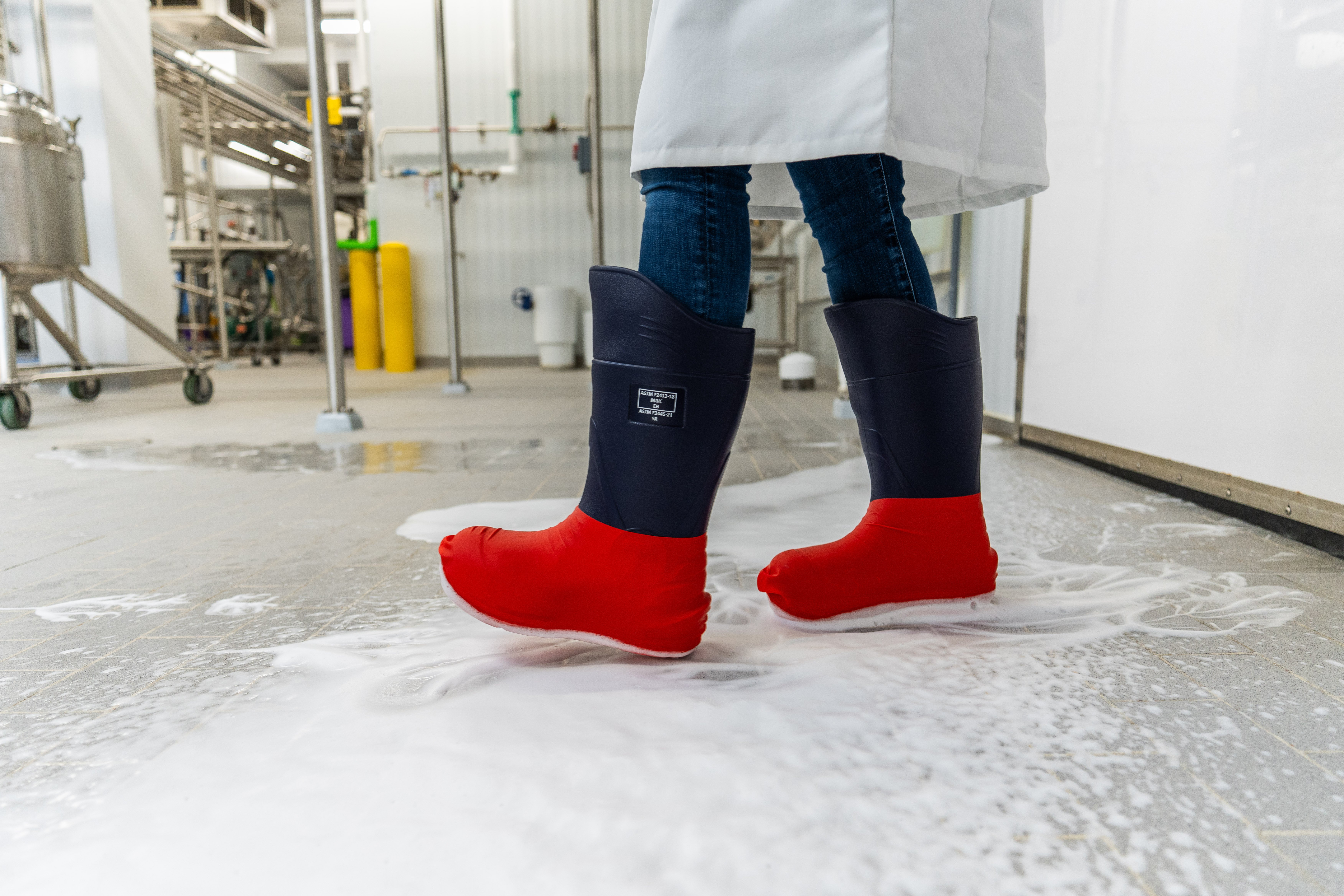 Employees can track in a myriad of potential contaminants and unknowingly put an operation at risk each time they breeze through a doorway to a production area. The effective use of a Disinfectant Mat™ provides a significant defense against cross-contamination. As employees step onto the mats, footwear is cleaned and sanitized. This barrier can help stop cross-contamination in its tracks.
Employees can track in a myriad of potential contaminants and unknowingly put an operation at risk each time they breeze through a doorway to a production area. The effective use of a Disinfectant Mat™ provides a significant defense against cross-contamination. As employees step onto the mats, footwear is cleaned and sanitized. This barrier can help stop cross-contamination in its tracks.
Some plant managers complain that employees don't use them. Others say that they don't get cleaned out often enough or, the sanitizing solution loses effectiveness, creating a source of contamination. Yes, these things can happen but they don't have to, as each of these problems have a simple answer.
 We can help make it work.
We can help make it work.The following suggestions have been collected over the years from Nelson-Jameson customers.
Don't forget other aspects of your program, such as air sampling, HACCP, surface sampling, insect control, drain cleaning, condensation control, and cleaning of drip pans, condensers, and air filters. Quality assurance techniques require monitoring, as Disinfectant Mats, by themselves, don't create a sanitation program. For more information, view our Footwear & Surface Sanitation Flyer!
Shop our selection of disinfectant Mats.

January 2, 2026
From regulatory updates to evolving needs for operational efficiency, food processors spent 2025 adaptin...

December 10, 2025
What is OSHA's Regional Emphasis Program (REP) for the food manufacturing industry? The OSHA Regional Em...

December 8, 2025
There is a fundamental connection between worker safety and food safety: A failure in worker safety can ...